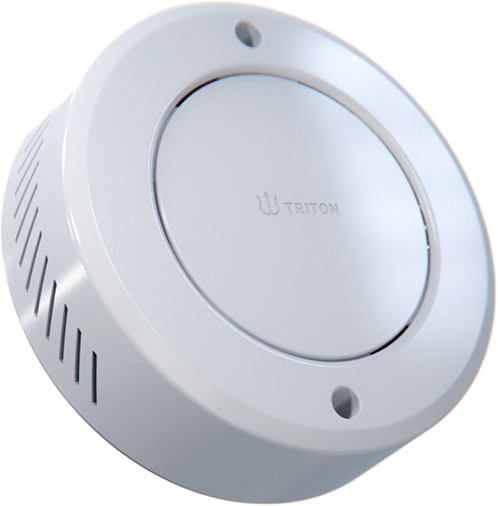Vaping was once a problem in schools. In between classes, students would slip into the bathrooms where the vapors of nicotine with flavored THC were undetectable. Administrators and teachers were powerless, until districts started using a new tool to protect them: the vape detector.
Today schools across the nation are reporting significant success stories, showing just how transformative this technology has the potential to be in fighting the issue of vaping.
A Case Study: Cutting the amount of vaping by 83% over 10 weeks
Luling Independent School District had a serious problem with vaping. Despite repeated warnings, and more stringent rules, students continued vape in bathrooms and locker rooms. Smoke alarms aren’t useful in the case of vapor and staff simply cannot be everywhere all at once.

As a test as a test, the district put in vape detectors on schools in March. The results were quite striking. In only five weeks, vaping incidents had decreased significantly. By the end of the ten-week period, vaping declined by 83%..
Administrators noticed a difference beyond the numbers. Teachers reported less disruptions and students were able to comprehend that vaping would not go unnoticed.
Similar success Similar Success Match Charter Schools
Another notable example comes from Match Charter Schools, which had a difficult time with high school and middle school vaping. They put in place a set of vape smoke alarms in the month of August and immediately saw outcomes.
Administrators revealed that vaping incidents on a weekly basis decreased by 80% in December. Parents were elated at the school for taking concrete actions to protect children. Teachers also noted that there was a reduction in hallways with loiterers and bathroom crowding.
Both districts are part of a rising trend. Schools that have adopted vape detection see tangible improvement in both behavior and security.
What are the factors that make vape detectors successful?
The technology behind the results is what makes them feasible. Modern vape detectors do more than simply detect the vapor. They also keep track of air quality and occupancy levels as well as provide staff real-time alerts. This means that administrators won’t have to rely solely on their intuition and post-fact reports.
The detectors have been developed to ensure your privacy. No cameras. No audio recording. There is no audio recording. All you need is instant, precise information to aid schools in acting quickly and without infringement of student rights.
The combination of efficiency and adherence makes vape detectors among the most efficient safeguards that schools can implement today.
Safety nets for vaping and Beyond
Many administrators are aware that detectors are not just for vaping prevention. The latest systems can detect loud noises and keywords that can be linked to emergencies and vandalism.
For example in the event that a group of students is seen loitering around the bathroom The detector will be able to detect the presence of a group that is not normal. Staff members can be alerted instantly if someone shouts “help” or another distress keyword. In this way, vape detectors for schools become part of a larger safety strategy one that addresses both health risks and potential violence.
Parents and Boards Support Vape Detectors
Transparency is a sign of trustworthiness that is often not considered. Schools using detectors may produce reports that clearly demonstrate trends in vaping activity. The reports are distributed to parents, school boards and the public to prove that concrete steps have been taken.
Parents, especially, feel gratified when they observe the tangible effects. Vape detectors don’t only detect students. It protects their health and reinforces the message that vaping does not belong in school.
The Takeaway is a Proven Path for the Future
Years ago, vaping seemed as if it was a war in the shadows that schools would not be able to be victorious in. However, cases from districts across the country show that the opposite is true. With the help of a vape detection device, administrators can identify instances in real-time and discourage dangerous behavior and provide safer spaces for students.
The vaping issue is far from being resolved however, the tide is turning. Vape detection technology isn’t only an attempt to solve the issue, but an opportunity for schools to lead the way in a healthier environment for their students.
Conclusion
Schools in Texas and Massachusetts are proving that technology works. Modern vape detectors do more than just sound the alarm. They change behavior, build trust and provide a long-lasting solution for today’s largest health concern for students. Vape detectors are now common for any school district who cares about safety.
